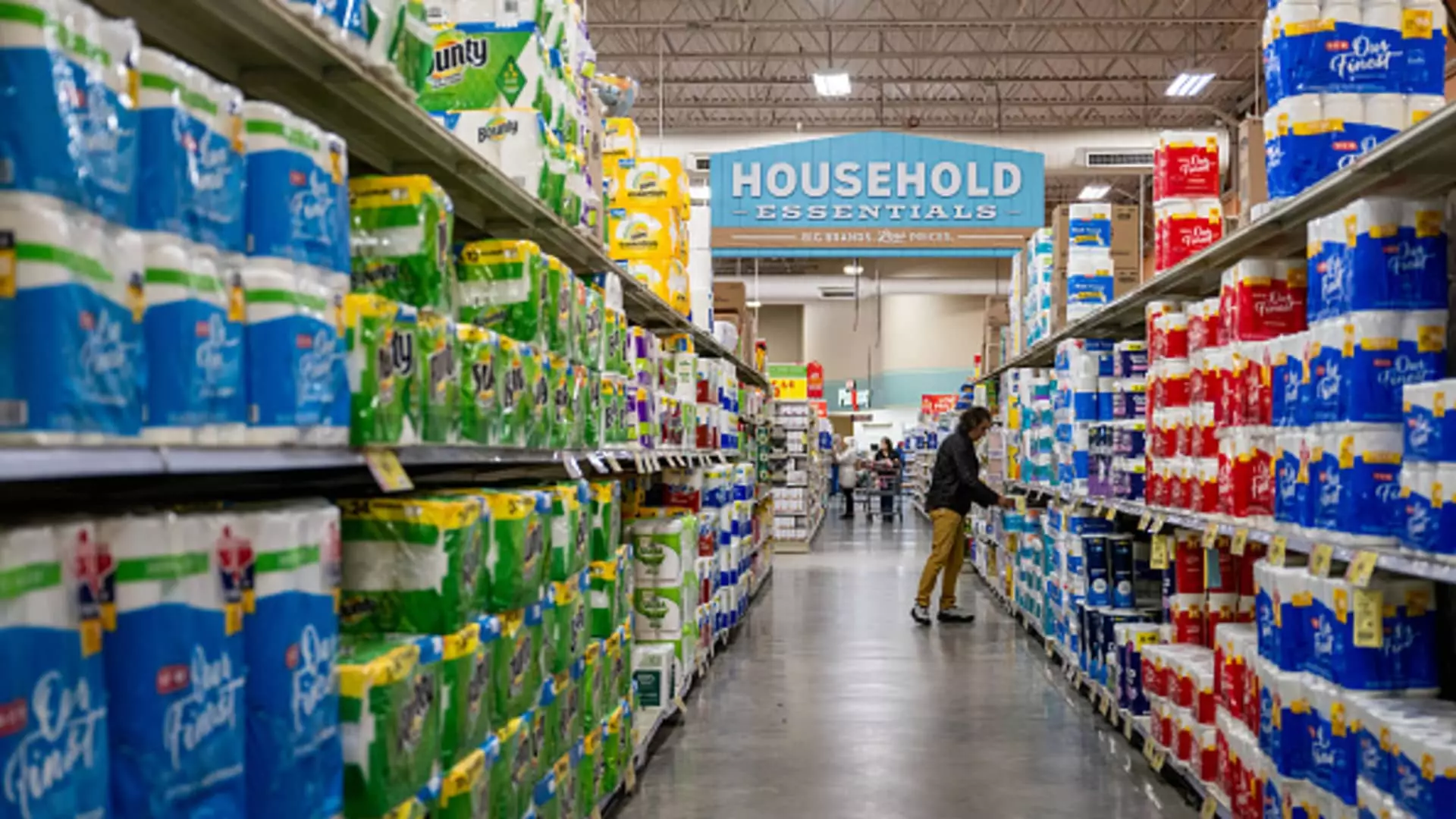In the ongoing saga of U.S. trade policy, the recent tariff increases initiated by the Trump administration serve as a stark reminder of how broader economic strategies often come with unintended consequences. While the intention of “America First” resonates with a segment of the populace, the reality is that these tariffs, particularly on essential goods, may exact a price that disproportionately affects everyday consumers. As we brace for rising costs on staples like coffee, bananas, and even toilet paper, it becomes essential to rethink the approach to trade meant to protect American interests.
The Disconnect Between Ideology and Reality
The premise is clear: in an effort to revive domestic manufacturing and bring jobs back to American soil, the government intends to escalate tariff rates on imports from over 180 countries. However, this well-meaning drive does an injustice to the complex web of global trade that many American manufacturers rely upon. The Consumer Brands Association (CBA), which advocates for major names like Coca-Cola and Procter & Gamble, emphasizes that the accessibility of certain crucial ingredients, especially those that cannot be sourced domestically, could become severely compromised due to these tariffs.
Tom Madrecki, the CBA’s vice president, aptly highlights a core issue; tariffs that ignore the specifics of ingredient and input availability do not merely raise consumer prices—they also hinder innovative American manufacturers who are trying to do the right thing.
Critical Imports Under Attack
While it might seem logical on the surface to limit imports and rely more heavily on domestic production, the reality is strikingly complicated. For instance, the U.S. is the leading importer of bananas, with a staggering 40% coming from Guatemala. The proposed 10% tariff on these imports could significantly burden everyday customers, who depend on such commodities for their nutrition. This trend extends beyond just tropical fruits; even spices that play pivotal roles in culinary traditions, like vanilla from Madagascar—now facing a whopping 47% tariff—will likely become luxuries rather than staples.
The implications here are not merely an increase in costs but a barrier to cultural expression and an overall diminished quality of life. For many American households, a childhood memory might revolve around vanilla cake at birthdays or fresh bananas in their cereal. These ingredients symbolize comfort and familiarity, and yet, government policies threaten to distort that very experience simply for political gain.
Challenging Domestic Production Assumptions
It’s easy to champion a return to domestic production without examining the underlying issues of agricultural policy that have arisen over decades. A telling statistic from the CBA reveals that over 90% of oats consumed in the U.S. are imported from Canada, as domestic production has dwindled since its peak more than a century ago. Our ability to sustain a self-reliant food system is faltering, calling into question the efficacy of imposing tariffs that force a reliance on domestic supply when that supply is no longer robust enough to meet our demands.
As the U.S. experiences changes in its agricultural landscape, the fragility of our food system becomes increasingly apparent. It exposes the weaknesses inherent in a system that prioritizes isolationism over strategic global partnerships, potentially sacrificing food security for ill-conceived nationalist ideals.
The Cost of Household Necessities
It’s not just food items that will be affected; everyday household goods face similar fates. From toilet paper to diapers, the looming tariffs will likely cascade through the supply chain, making essential items more expensive. Given that a significant portion of raw materials for these products—like wood pulp and palm oil—are imported from countries facing high tariffs, consumers are in for a rude awakening at checkout. The burden of these taxes will be felt disproportionately harder by families already grappling with tightening budgets.
A strange paradox arises: while the tariffs are designed to protect jobs and revive American manufacturing, a surge in household product prices might lead people to rethink their spending habits, ultimately undermining manufacturers’ efforts.
Investors React to Tariff Uncertainty
As news of these tariffs broke, the market’s immediate response revealed a duel of confidence. Stocks within the consumer staples sector witnessed a rise, as investors gravitated toward perceived safety. The willingness to bet on companies like Procter & Gamble and Coca-Cola reflects a collective understanding that even amidst turmoil, staple goods remain necessary. Eternal optimism among certain investors, however, fails to account for the rapid escalation of consumer prices that could scare off everyday shoppers, destabilizing the very companies in which they invest.
The situation serves as a poignant example of the complexities that arise when trade policy intersects with real-life consumer experiences. While a desire to enhance domestic production is commendable, it must be approached with nuance, recognizing that isolationism in trade can yield significant collateral damage to everyday American lives.


Leave a Reply